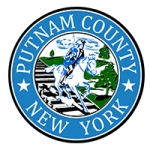
News & Press Releases
The Putnam County Department of Health is made of several divisions all working towards improving and protecting the health of the community. Click on one of the options below to learn more about that division.

Health Department Warns Residents About the Dangers of Lead Poisoning
BREWSTER, NY—Lead poisoning prevention month comes annually in the fall—but the staff at the Putnam County Department of Health know well it is a year-round job—with the livelihood of children at stake. Over the last eight months, public health nurses at the health department have been monitoring the blood levels of nearly a dozen children exposed to lead after consuming a specific brand of cinnamon applesauce pouches. Eating these contaminated pouches caused exposures nationwide and the U.S. Food and Drug Administration issued a recall to remove the remaining products from the store shelves. With their continuing investigations, the FDA, as they are better known, issued further recalls in March on several imported brands of packaged ground cinnamon because of possible lead contamination.
“Lead is toxic to humans and can affect people of any age or health status,” said interim health commissioner Michael J. Nesheiwat, MD, “and poisoning by this heavy metal is 100 percent preventable. This health risk is most concerning with childhood exposure because it can have lifelong, adverse effects. Children’s bodies are rapidly developing, and they are more susceptible to absorbing lead when exposure occurs. There have been well-documented consequences in children, including slowed growth, learning and behavioral issues, hearing and speech problems, and lowered intelligence, resulting from damage to the brain and nervous system.”
Ingesting lead from contaminated food is not the only way children in Putnam can be exposed to this toxic metal. Housing built before 1978 can present another risk. That was the year the federal government banned lead paint. Homes built before this ban are common across Putnam County. Some neighborhoods, including historic areas in the Villages of Brewster and Cold Spring, may be at greater risk where the housing is mostly pre-1978 and in need of repair. These areas may attract low-income populations, setting the stage for health disparities related to the social determinants of health. Older housing may also have lead pipes, faucets, and other plumbing fixtures, so contaminated water may pose another health issue. With lead paint, if it is left undisturbed, it poses minimal risk. Renovation work on the other hand can expose the contaminated paint and cause problems. That is why before any renovations get started, residents are urged to consider testing for lead, especially if there are young children living in the home.
“Children are more likely to become exposed due to lead paint because they often play on the floor where lead dust settles,” explained Dr. Nesheiwat. “They put their hands in their mouths, transferring and swallowing any lead dust with which they may have come in contact.”
Activities such as sanding, cutting, replacing windows and others can create lead dust and chips, harmful to both adults and children. An inspection and assessment of all home surfaces can determine if lead paint is present and if so, what hazard level the paint presents.
“There are no immediate symptoms that tell if a child has been exposed or has a high blood lead level. The surest way to know is to test the child’s blood for lead,” continued Dr. Nesheiwat. “In fact, in New York State, tests are required at ages one and two by public health law. However, speaking with your child’s healthcare provider is the best way to know if more tests might be recommended in an individual situation.”
The good news is that if the source of exposure is found and eliminated, and the blood lead levels are not too high, the body’s natural ability to flush out toxins will allow children and adults to recover. Eating foods high in iron will help decrease the amount of ingested lead that can be absorbed by the body.
“Periodic monitoring of the child’s blood after exposure is what we do,” said Jeanette Baldanza, RN, public health nurse at the health department. “This way we are certain that the lead source has been eliminated and the “BLLs,” or blood lead levels, are going down. When they fall below 5 micrograms [per deciliter] for two consecutive tests, we stop monitoring. But remember, there is no safe amount of lead in a person’s blood. We are happy to report that all the children we have been monitoring since last fall are seeing BLL reductions. We will be happiest of course when we can cross all the affected children off our lists.”
For those planning any home renovation, repair and painting projects in a home with lead, Brian Stevens, associate public health sanitarian at the health department, advises following the guidelines of the Environmental Protection Agency, commonly known as the EPA. “It is best to hire a lead-safe contractor who is trained and certified in lead-safe work practices,” Mr. Stevens said. “This is certainly the safest way, but the EPA does provide guidance online for do-it-yourselfers with smaller projects.”
More information about lead and how to protect your family, is available on the health department’s environmental health page at www.putnamcountyny.com/health/environmental. Just click on “Lead Poisoning Prevention” in the center menu. The EPA also has a locator search for certified lead-based paint professionals at https://cdxapps.epa.gov/ocspp-oppt-lead/firm-location-search. It searches a large, national database and yields the names of professionals, their phone numbers, addresses, and certification numbers with expiration dates.
Home renovations are not the only way that lead exposure can occur. Lead has been found in other spices besides cinnamon, toys, jewelry, and candies, most often if they come from outside the U.S. Certain jobs or hobbies, like stained-glass work, can result in adults bringing lead into their home with the chance of contaminating the home environment.
The mission of the Putnam County Department of Health is to improve and protect the health of the Putnam County community. The department, nationally accredited by the Public Health Accreditation Board (PHAB) through 2029, serves a community composed of nearly 100,000 residents. Core services are provided through a lens of equity, and include community health assessment, disease surveillance and control, emergency preparedness, environmental health protection, family health promotion and health education. For more information, please visit the County website at www.putnamcountyny.com, or visit our social media sites on Facebook, X (formerly known as Twitter) and Instagram @PutnamHealthNY.
For more information:
FDA Alert Concerning Certain Cinnamon Products:
- English: https://www.fda.gov/food/alerts-advisories-safety-information/fda-alert-concerning-certain-cinnamon-products-due-presence-elevated-levels-lead
- Spanish: https://www.fda.gov/food/alerts-advisories-safety-information/alerta-de-la-fda-sobre-la-presencia-de-niveles-elevados-de-plomo-en-determinados-productos-de-canela
Importance of Childhood Blood Lead Testing
- English: https://www.youtube.com/watch?v=MPePSbzV_kg
- Spanish: https://www.youtube.com/watch?v=fQHIsBnKCAw
- Spanish: https://www.youtube.com/watch?v=VBUWQ8maKtw
Illinois Department of Public Health
- Lead Safety for Hobbyists: https://dph.illinois.gov/content/dam/soi/en/web/idph/files/publications/lead-safety-hobbyists-041516.pdf
Additional Articles
-
 New Community Health Survey Asks Residents: How Healthy Are We?
New Community Health Survey Asks Residents: How Healthy Are We? -
 Suicide Prevention in Putnam and Beyond
Suicide Prevention in Putnam and Beyond -
 Health Department Spotlight: Danny Reis
Health Department Spotlight: Danny Reis -
 Health Department Warns Residents About the Dangers of Lead Poisoning
Health Department Warns Residents About the Dangers of Lead Poisoning -
 Prevent mosquito breeding—dump standing water after rain
Prevent mosquito breeding—dump standing water after rain -
 Spotlight on the Public Health Corps Fellowship
Spotlight on the Public Health Corps Fellowship -
 The PCDOH Makes Summertime Living Easy…and Safe
The PCDOH Makes Summertime Living Easy…and Safe -
 Heat-Related Illnesses 101
Heat-Related Illnesses 101 -
 Tips for Staying Healthy During a Heat Alert
Tips for Staying Healthy During a Heat Alert -
 Free Rabies Vaccination Clinic Scheduled for July 13
Free Rabies Vaccination Clinic Scheduled for July 13
Welcome Message
The mission of the Putnam County Department of Health is to improve and protect the health of our community.
We strive to prevent the spread of disease, protect against environmental hazards, promote healthy lifestyles, ensure access to quality health services, and respond to disasters.
We encourage you to explore our website and contact us if you have any questions.
In the event of an emergency, Health Department staff are available 24/7. Please call 845-808-1390 to report a public health emergency, rabies exposure, communicable disease, water outage or sewer overflow.
If you are a member of the media and would like to contact the health department, please email
Contact the Department of Health
-
Office | 845.808.1390
-
Fax | 845.278.7921
-
Fax (Nursing) | 845.279.4104
-
Address | 1 Geneva Rd, Brewster, NY 10509
